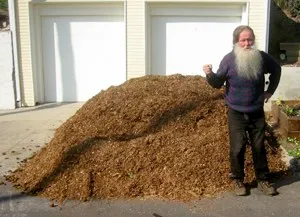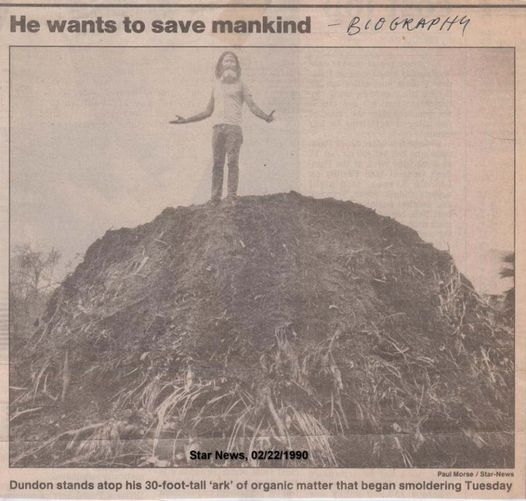Manure
See Guru of Doo Doo.
Horse
An adult horse will produce around 40-50lb of manure every day. Find a horse and you'll find a human that needs to dispose of that much manure every day.
TODO add photos of a horse, different consistencies of manure, 6' pile for scale
Warning: Manure Pits Are Deadly
NEVER ENTER AN ENCLOSED SPACE CONTAINING HORSE MANURE!
Horse manure produces hydrogen sulfide, carbon dioxide, methane and ammonia during breakdown. Fresh manure has an especially high capacity for production of these gases and high enough concentrations can knock you unconscious instantly.
Lack of ventilation prevents outside oxygen from displacing the gases in occupiable areas of enclosed space as they are produced. Low percentages of oxygen can knock you unconscious quickly.
Once unconscious you will quickly suffocate in the low-oxygen environment while being continuously poisoned by the gases.
The poisoning would leave permanent damage even if you were somehow able to be immediately rescued by enough people to enter and carry your limp body out all while holding their collective breaths and risking their own lives. You should never try to save someone who has collapsed in such a situation. Therefore you should never expect someone to do so for you.
On Aug. 10, three brothers died from the toxic fumes of an underground manure pit on their family’s farm, sending shock waves across the agricultural community, well beyond the town of St. Henry, Ohio.
The eldest brother stepped into the underground tank first. He went in to fix a problem with a pump. When he was overcome by a toxic mix of gases and passed out, another brother called for help before rushing in to try rescue his brother. Then a third brother went in to try to save the other two.
One by one, they all succumbed to the gases. One by one, they passed out, landing in the standing liquid, a tragic domino effect: Gary Wuebker, 37, Brad Wuebker, 35, and Todd Wuebker, 31.
— Manure Pit Fatalities Spur Toxic Fumes Awareness
Stables & Dumpsters
TODO add photos of dumpster for scale
A small stable can and will fill a 40-yard dumpster in a week. These bins are 7' tall, 7' wide and 22' long. Consider the following cross-section of a 40-yard dumpster.
┌───────────────────────┐
│ \ │ 7'
│ MANURE \ DEATH │
│ FILLED TO BRIM \ ZONE │ < Door
│ \ │
└───────────────────────┘
18' 4'
Accessing from an opened door doesn't eliminate the danger. Stepping too quickly into the DEATH ZONE before enough oxygen has displaced the gases will result in incapacitation and death.
Climbing into the DEATH ZONE is incredibly dangerous. Inhaling just below the brim of the dumpster could be enough to make you dizzy and stumble lower rendering subsequent breaths futile resulting in incapacitation and death.
Standing on top of the pile can be misleadingly tolerable. The uneven and unexpected composition of the pile is a tripping hazard. Tripping and falling into the DEATH ZONE will result in incapacitation and death.
The 3m 6006 is a multi-purpose respirator cartridge that claims to protect against hydrogen sulfide, carbon dioxide, methane and ammonia gases. See 3m respirator cartridge selection poster. Always do your own research but NEVER rely on a respirator to allow you to enter the DEATH ZONE.
NEVER ENTER THE DEATH ZONE
DON'T DO IT WHILE HOLDING ON TO THE EDGE. YOU'LL LET GO WHEN YOU PASS OUT.
DON'T DO IT WHILE SOMEONE HOLDS YOUR HAND. THEY'LL DROP YOU AND BE UNABLE TO CLIMB IN TO GET YOU OUT.
DON'T DO IT FIRST THING IN THE MORNING WHEN THE STENCH OF AMMONIA IS LESS PRONOUNCED. YOUR NOSE IS NOT A GAS MONITOR.
Selection
Avoid manure mixed with bedding (wood chips). The increased carbon increases the carbon:nitrogen ratio. Trace amounts are acceptable if aging. Small amounts are acceptable if composting.
The data indicate that horse manure without bedding will supply a modest amount of N to plants. Horse manure with bedding will often tie up N, and supplemental N is needed when using this material as a source of organic matter for soils.
— Horse Manure and Soil Nitrogen
Horse manure should be aged or composted before application.
Aging
When Not Used in Close Proximity to Edible Plants
Age 2-4 weeks to prevent burning the plant's roots. Consider intensity of material when spreading.
When Used in Close Proximity to Edible Plants
Age 6 months to prevent pathogen transmission.
Start a pile 6 feet tall and 6 feet in diameter (2.094 cubic yards). Place it beneath the largest tree just inside of the drip line.

Any smaller and the core will lose its thermal inertia. 5'x5' is 1.212 cubic yards.
Any larger becomes quickly dangerous. 7'x7' is 3.325 cubic yards. Toxic gas concentrations can become dangerously high. In hot weather and when too densely packed or otherwise lacking ventilation the core can overheat beyond the relatively low ignition point of the straw which can ignite the gases causing a fiery explosion.

Don't add to it. Don't turn it. Don't touch it. Tarp it with a circular cone shaped tarp with an open top. Keep the exterior moist by temporarily removing the tarp and misting minimally–more during summer, less during winter.
TODO diagram of tarp and ventilation pipe
gardendrum.com/2013/11/07/how-to-aerate-a-large-compost-heap
Lay flat a 1/2" PVC the length of the radius plus 6" (3'6") with holes drilled on one end and wrapped in landscaping fabric. Place the end with holes in the center of the pile with the other ends sticking out of the pile.
Start in Fall (Aug-Oct) for use in Spring (Feb-Apr) and vice versa.
The centermost region will contain the richest material for root-adjacent application, the weathered exterior good for a straw mulch and the in-between good for a manure tea.
TODO cross-section of regions
Composting
Spreading
Spread during Spring and Fall. Work 2" loamy material into the top 2-4" inches of existing soil. Mulch with an additional 2-4" with weathered material.
Guano
Bat
Collect from beneath a bat box.